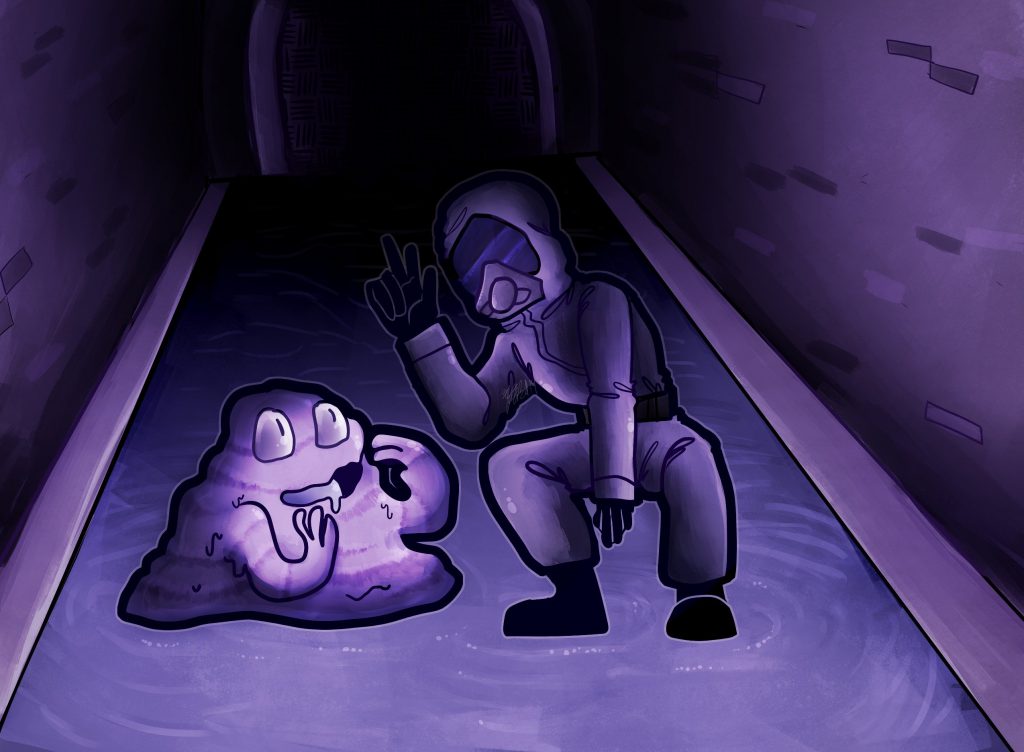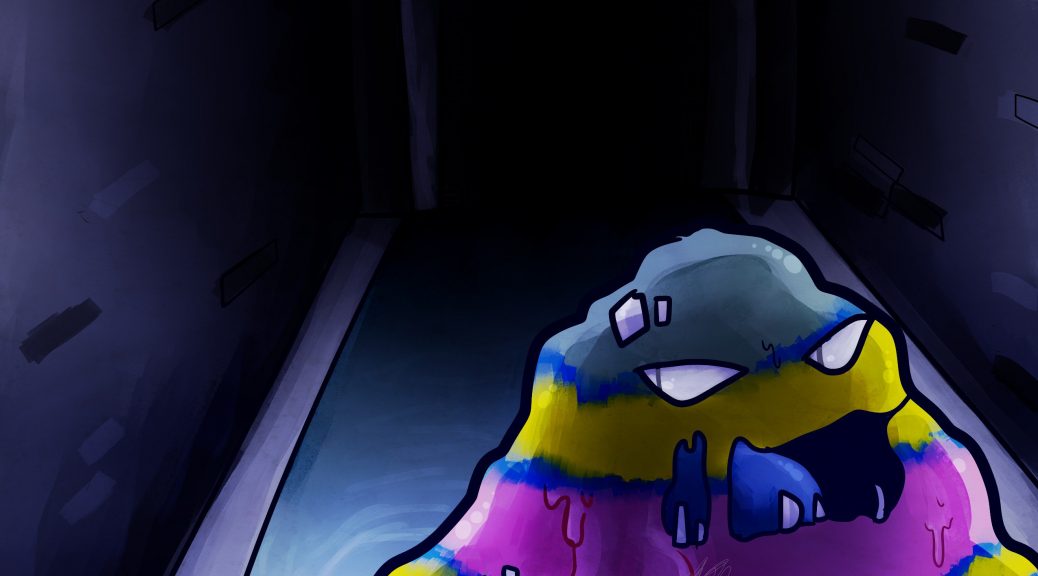Alola’s Answers to Rising Pollution in Castelia City Sewers
Cities with high populations are constantly bringing in new people and it’s causing problems with pollution. A group of researchers head to Castelia City’s sewer system to investigate the Grimer and Muk population, and discuss a solution.
Cities such as Castelia, Lumiose, and Hau’oli City are expanding at a rapid rate as commerce continues to grow, and when more jobs can be found within the city, that’s where everybody flocks. With this continuous growth of populations in compact areas, the debate of trash disposal becomes a bigger hot-button issue as we frantically ask ourselves, “What are we going to do with all this trash?”
Grimer and Muk, considered by some to be a scourge on the city’s infrastructure, actually have some useful dependencies we should be taking into consideration before coming to the conclusion of Grimer/Muk population control as a deterrent. Castelia is the second largest city in Unova, exceeded by Nimbasa, whose sewer systems are closed off. But just because something is out of sight does not mean the problem disappears, or is nonexistent. Grimer and Muk were born from, and feed off, the filth of humans. Their body structure is fully dependent on what they consume. Unfortunately that means the Grimer and Muk inhabiting the sewer systems are going to be made up of sewage waste. A research team from Unova who have been studying the recent population spike of these sludge Pokémon are now taking a closer look at what exactly our local Grimer and Muk are biologically made up of to determine where our biggest waste issues lie.
On the topic of origin, Scientist Caroline had this to say:
“The birth of these Pokémon down here means we are failing to provide proper waste disposal in our cities. It’s a sewer, so you’re inevitably going to have a few families, but there’s too much. We have to be doing more. It’s not fair to the Pokémon, and it’s a public health hazard.”

Local trainers seem to be exploiting this trending rise, as well. Over the last two years there seems to be a growing interest in obtaining these volatile creatures for themselves.
“Grimer and Muk are incredibly toxic Pokémon. You really shouldn’t be handling them unless you’re properly equipped. It’s not so bad in the autumn and winter when the beds are dry, but in the spring and summer we have an influx of trainers come down here, not only endangering themselves, but our research as well.”
– Scientist Clarke.
So what exactly is a feasible solution when the cities are growing faster than our ability to come up with new solutions? Alola’s attitude of clean city keeping has the answer to just that.
In Alola, Grimer are a non-native species that consume a lot more than just sewage waste. They were translocated there (the capture and release of wild species into a new location) to eat the ever growing heaps of garbage. This separate diet of trash, rather than sewage waste and toxic pollution, gives them a more lustrous, healthier appearance, less toxic to touch, and they smell a whole lot less. The Grimer as we know them, purple-grey and sickly, are virtually nowhere to be seen in Alola because of this.
This is excellent news for Castelia. We can use this idea of translocation within our own local cities here, and create reserves for the trash seeking Pokémon to thrive in that work in tandem as a dumpsite. If done properly, these landfills will become a nature reserve and we can see a steady decline in city filth in just a few short years, while also minimizing the toxicity of wild Grimer and Muk, making Castelia a safe place to breathe once more.

In Route 4, to the north of Castelia leading to the Desert Resort and Nimbasa City, there’s also been a spike in Trubbish, another trash-feeder. They have only just started appearing there within the last two years, about the same time Grimer and Muk showed up in the sewers, not coincidentally during the same time Unova’s urban development began spreading up into the area.
I have two propositions for this. One is a test patch in the area where the Trubbish are most proactive to translocate a select few Grimer (catch, tag, and release) from the sewer systems, and for the waste disposal of a few select areas of Castelia and Nimbasa to transpose their dump site to this area for a year to test the effects. Not only will this lead to less volatile Grimer, but it creates a central point for Trubbish, and discourages the Trubbish from spreading out, keeping them in one controlled area.
The second proposition is re-purposing the Castelia sewers as not only a sewage waste-site, but also as a trash dump for Castelia. In this way we can aid in the health of our already existing Grimer populations who do their part keeping our sewers at a manageable amount of waste, and solve more of our non-recyclable waste problems.
“They’re just super happy eating trash just as much as they are the sewage,” says one researcher. “Who are we to impede on the possibility of a mutually beneficial agreement?”
Edited by Aldo, bobandbill, Sheep, and Soccersam.
